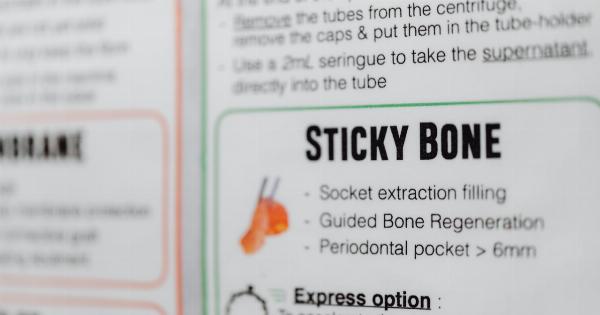Sexual dysfunction is a common problem that affects people of all ages. It can lead to a decreased quality of life, relationship problems, and even depression. However, many people are unaware that they have a sexual dysfunction issue.
In this article, we will discuss the different types of sexual dysfunction and ways to find out if you have a sexual dysfunction issue.
Types of Sexual Dysfunction
Sexual dysfunction can be categorized into four types:.
1. Sexual Desire Disorders
This type of sexual dysfunction is characterized by the lack of sexual desire or interest in sexual activity.
2. Sexual Arousal Disorders
Sexual arousal disorders are marked by the inability to become physically aroused or maintain arousal during sexual activity.
3. Orgasm Disorders
Orgasm disorders are characterized by the inability to reach orgasm or experiencing an unsatisfactory orgasm.
4. Sexual Pain Disorders
Sexual pain disorders occur when there is pain or discomfort during sexual activity.
Symptoms of Sexual Dysfunction
The symptoms of sexual dysfunction vary from person to person and depend on the type of sexual dysfunction. Some common symptoms include:.
- Lack of interest in sexual activity
- Inability to become aroused
- Inability to maintain arousal during sexual activity
- Inability to reach orgasm
- Pain or discomfort during sexual activity
Finding Out if You Have a Sexual Dysfunction Issue
If you are experiencing any of the symptoms mentioned above for a prolonged period, it is essential to talk to your healthcare provider. They can help diagnose the type of sexual dysfunction and recommend treatment options.
Some of the methods to diagnose sexual dysfunction are:.
1. Physical Examination
Your healthcare provider may perform a physical examination to check for any underlying medical conditions that may be causing sexual dysfunction.
2. Psychological Evaluation
A psychological evaluation may be done to assess any psychological or emotional factors that may be contributing to sexual dysfunction.
3. Blood Tests
Blood tests may be performed to check for any hormonal imbalances that may be causing sexual dysfunction.
4. Imaging Tests
Imaging tests may be recommended to check for any physical abnormalities that may be causing sexual dysfunction.
Treatment Options for Sexual Dysfunction
The treatment options for sexual dysfunction vary based on the diagnosis. Some common treatment options include:.
1. Medications
Medications may be prescribed to treat hormonal imbalances, such as testosterone therapy.
2. Counseling
Counseling can help address any psychological or emotional factors that may be contributing to sexual dysfunction. It can also help improve communication in a relationship.
3. Surgery
Surgery may be recommended to correct physical abnormalities that may be causing sexual dysfunction.
Conclusion
Sexual dysfunction is a prevalent problem that affects people of all ages. If you are experiencing any symptoms of sexual dysfunction, it is crucial to talk to your healthcare provider.
They can help diagnose the type of sexual dysfunction and recommend appropriate treatment options. Early diagnosis and treatment can help improve your quality of life and prevent any relationship problems.



























